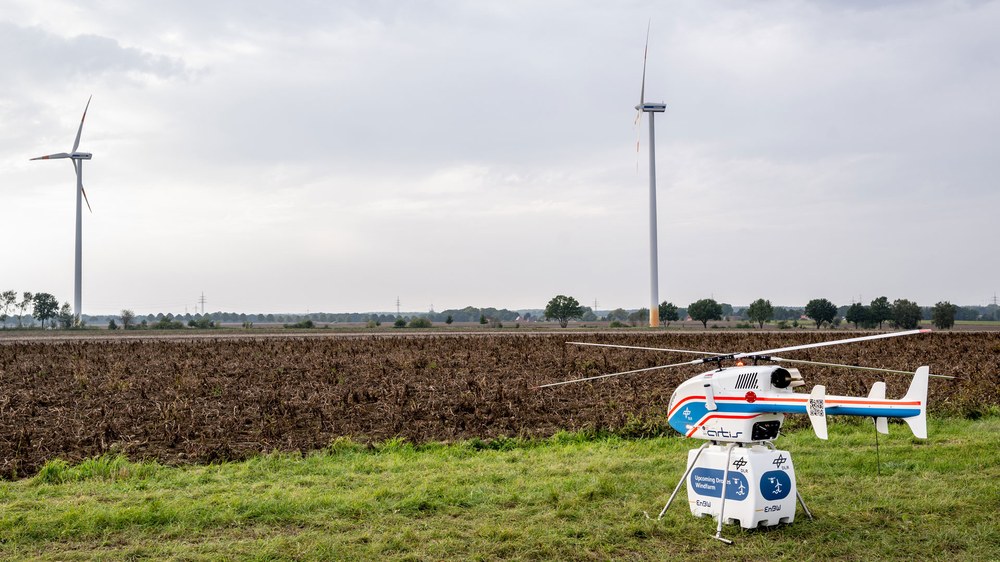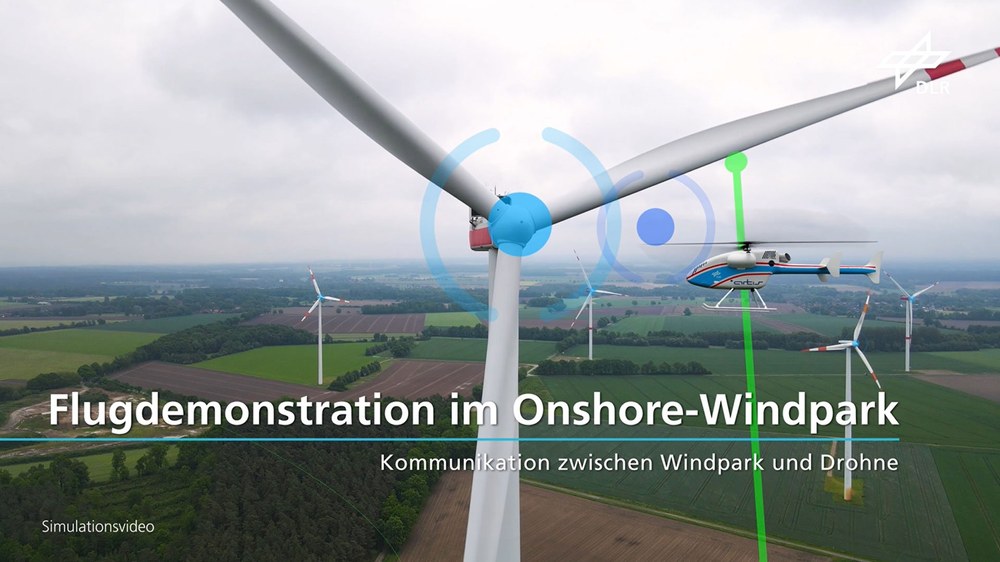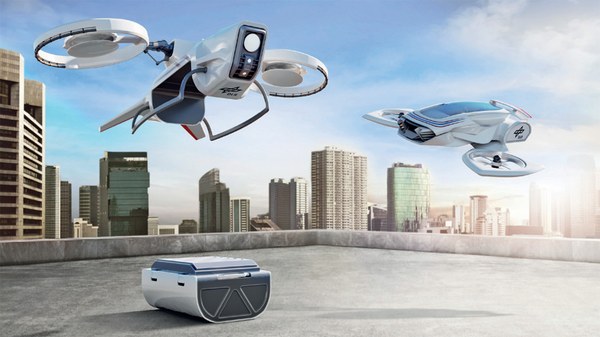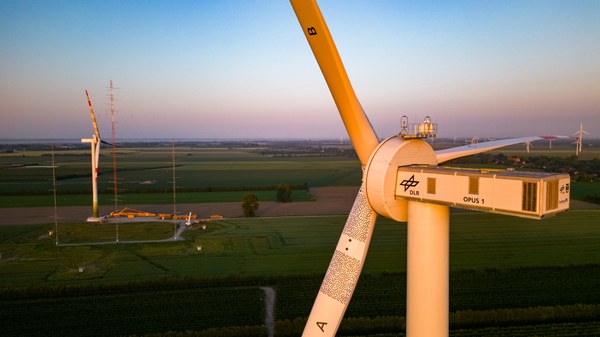Drones to transport personnel and materials to offshore wind farms



- Logistics for offshore wind farms could be simplified with the use of drones. DLR is working with energy supplier EnBW to determine requirements and possibilities.
- DLR's unmanned small helicopter superARTIS successfully completed a test flight at an onshore wind farm.
- At the Offshore Drone Challenge in June next year, seven companies will present their solutions in Cochstedt.
- Focus: Aeronautics, energy, wind power, unmanned flight, technology transfer, future mobility.
Maintenance teams and materials have to travel long distances to reach offshore wind turbines. Can drones take over transport tasks and relieve maintenance personnel? The German Aerospace Center (Deutsches Zentrum für Luft- und Raumfahrt; DLR) is investigating the possibilities and requirements together with the energy supplier Energie Baden-Württemberg AG (EnBW). In this context, an unmanned DLR small helicopter has now flown to a wind turbine and automatically communicated with it. Seven commercial drone manufacturers will follow up on the findings to further advance the technology developed at DLR. To this end, DLR and EnBW are organising the 'Offshore Drone Challenge' (ODC) in June 2024 at the National Experimental Test Center for Unmanned Aircraft Systems in Cochstedt.
The wake turbulence of wind turbines can strongly affect drones. The drone requires a lot of power to compensate for the air turbulence. "For automated use in a wind farm, the drone must therefore exchange information with the turbines," says Sebastian Cain from the DLR Institute of Flight Systems, which is leading the project. It is important that the drone and the wind turbine 'understand' each other well. "The drone needs to find the optimum route autonomously. To do this, it needs data from the turbines and wind turbines may have to be stopped so that the drone can reach its destination safely." The interruption in turbine operation – and thus in power generation – needs to be as short as possible.
Communication between wind farm system and superARTIS successfully demonstrated
At the beginning of October 2023, the unmanned DLR small helicopter superARTIS took off at the EnBW wind farm in Schwienau (Lower Saxony). superARTIS included information on the operating status of the individual wind turbines, weather information and wake turbulence in the calculation of its flightpath. By means of communications interfaces, the aircraft announced its arrival at a wind turbine. A simulated control room approved the approach, and the controlled wind turbine was stopped. The aircraft was able to approach without danger. The turbine was then reactivated. Had the drone not received clearance, it would have automatically entered a holding pattern. For a realistic scenario, the researchers attached a payload to the aircraft. The test did not take place offshore but on land, to make it safer and easier to conduct the experiments. "However, the results can be transferred to offshore installations. The communication between the flying vehicle and the turbine was conceptualised for offshore operation and is being studied in simulations for this purpose," explains Sebastien Cain.

Video: Simulation – the unmanned DLR small helicopter superARTIS approaches a wind turbine
Your consent to the storage of data ('cookies') is required for the playback of this video on Quickchannel.com. You can view and change your current data storage settings at any time under privacy.
Commercial enterprises benefit from research results
The flight test was an important intermediate step in the 'Upcoming Drones Windfarm' (UDW) project organised by DLR and EnBW. The aim of the project is to find out the conditions and necessary steps for the realisation of drone operations, initially for the transport of materials, and subsequently also for passenger transport. The project also includes the 'Offshore Drone Challenge' (ODC), where drone manufacturers and service providers will present suitable solutions. The stakeholders will be able to benefit from the current research results. Companies Anavia, Flowcopter, Flying Basket, HyFly, NEXaero, Unmanned Helicopters and Volocopter were selected and will now present their technologies in Cochstedt during June 2024.
"We will see several firsts in terms of the number and size of the aircraft," says Sebastian Cain. "In addition, they will all contribute to making the Offshore Drone Challenge a venue for drone demonstrations. It will also create a space for an exchange on technology, business and regulatory matters." Michael Splett, Head of Offshore Operations at EnBW and a member of the National Drone Council of the German Federal Ministry for Digital and Transport (Bundesministerium für Digitales und Verkehr; BMDV), adds: "Offshore wind energy is indispensable for the energy transition and a sustainable energy supply. As operators, it is our task to bring together the two technologies of wind energy and heavy-lift drones. Accordingly, with the ODC we are taking an important step to further explore the realisation of future drone operations."
Test flight maneouvres at the Offshore Drone Challenge in Cochstedt
The Challenge in Cochstedt will focus on testing flight manoeuvres that are relevant to the operation and maintenance logistics for offshore wind farms. This includes software topics as well as design modifications to connect the 'drone' and 'wind farm' systems. The Challenge will be carried out on land, as this is significantly safer, simpler and more cost-effective than the subsequent application at sea. The seven drone manufacturers and service providers will be able put their technologies to the test during the Challenge, which will be held over two days. The various stages include tasks such as picking up and setting down a load as automatically as possible or flying beyond line of sight.

EnBW
In addition to the DLR Institute of Flight Systems in Braunschweig and the National Experimental Test Center for Unmanned Aircraft Systems, the DLR Institute of Air Transport in Hamburg is also involved in the Upcoming Drones Windfarm project.
The project is being funded by the Federal Ministry for Economic Affairs and Climate Action (Bundesministerium für Wirtschaft und Klimaschutz; BMWK).
More information
Related article
Safe operation of unmanned aircraft systems
The aim of the research and development work at the Institute of Flight Systems is the simple and safe operation of Unmanned Aircraft Systems (UAS) under complex conditions – challenging weather conditions, obstacle-rich flight environments and interactions with other traffic. One focus is on unmanned cargo transport, together with the development of hardware and software components and the necessary approvals. For this purpose, the Institute operates several unmanned aerial vehicles as test systems.
DLR National Test Center in Cochstedt
The DLR National Experimental Test Center for Unmanned Aircraft Systems is located in Cochstedt. The testing centre allows networking between interested parties and enables the further development of technologies for Unmanned Aircraft Systems (UAS). The test site in Saxony-Anhalt is accessible to users from start-ups through to the established air transport industry for research and testing. It also acts as an incubator and enabler for start-ups and SMEs. In Cochstedt, UAS technologies can be tested under real conditions before they find their way into everyday use.


